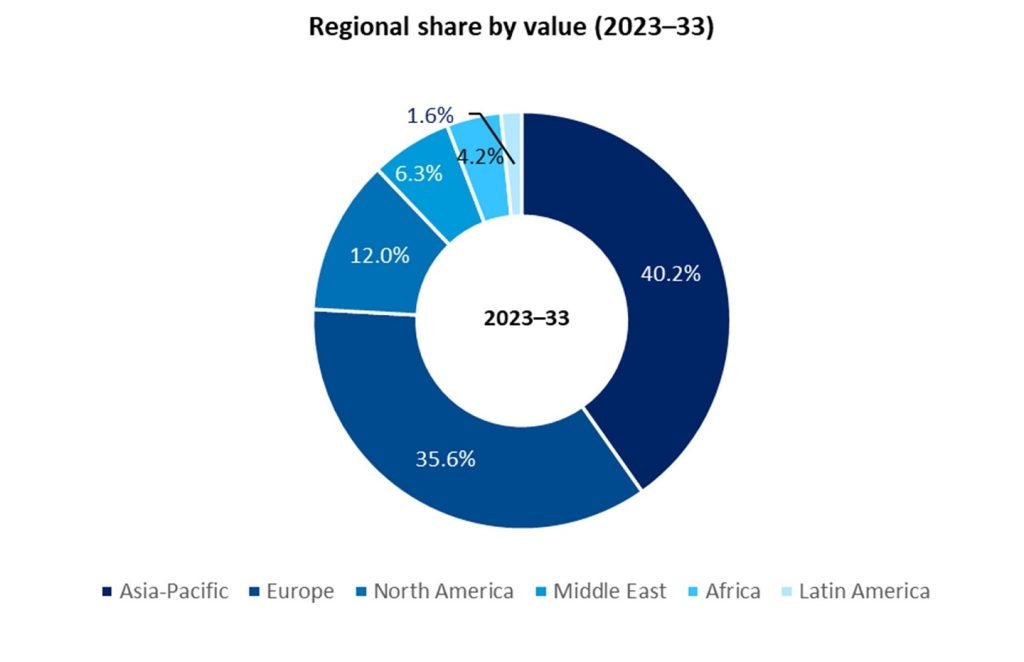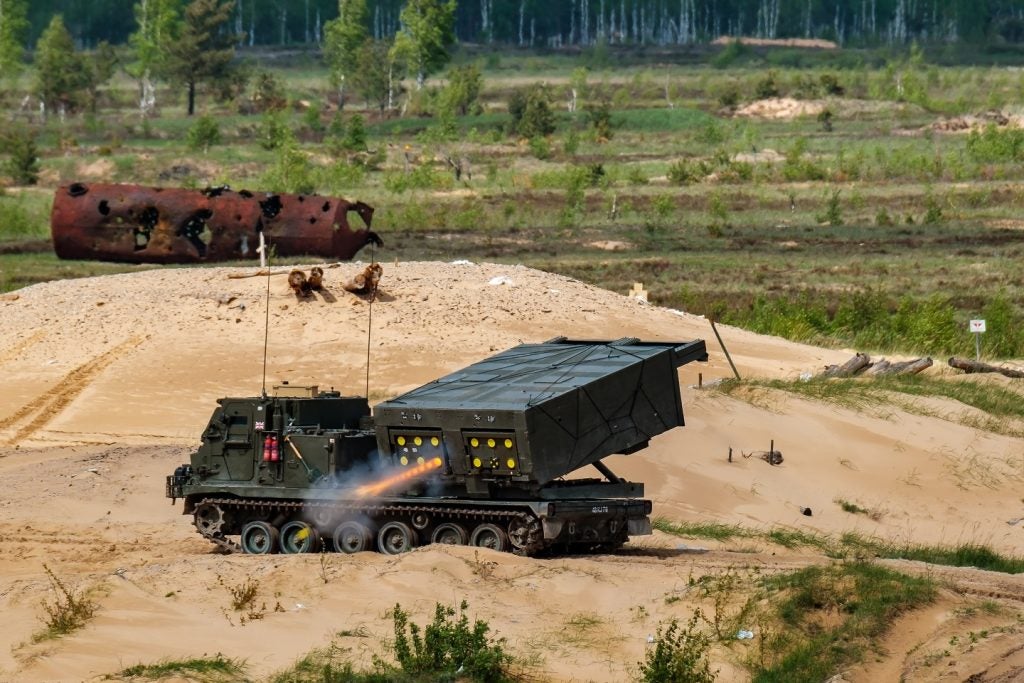
Amidst ongoing conflicts, the US Department of Defense’s $6bn security assistance package for Ukraine includes support for High Mobility Artillery Rocket Systems (HIMARS), revealing their continued relevance in countering Russian aggression.
The Ukraine conflict has seen prolonged artillery warfare. Initially lacking comparable artillery capabilities, the Ukrainian forces faced disadvantages, prompting appeals for Western assistance.

Discover B2B Marketing That Performs
Combine business intelligence and editorial excellence to reach engaged professionals across 36 leading media platforms.
The provision of artillery systems such as the HIMARS enhances Ukraine’s ability to challenge Russia, which is crucial in a conflict marked by intense artillery exchanges along the frontline.
Allies’ contributions to Ukraine’s HIMARS arsenal
The timeline of HIMARS’ support for Ukraine in its fight against Russian forces showcases a consistent effort by the US and its allies to strengthen Ukraine’s defence capabilities.
In June 2021, the US Department of Defense announced plans to deliver four M142 HIMARS to Ukraine as part of a $700m presidential drawdown package. These rocket launchers were pre-positioned in Europe to ensure swift delivery. Following this, a three-week training session for Ukrainian users and maintenance teams preceded the transfer of equipment.
Recognising the effectiveness of HIMARS, US Defense Secretary Lloyd J Austin III revealed plans to send four more systems to Ukraine during the fourth virtual Ukraine Defence Contact Group meeting. These additional systems, part of the 16th military package, aimed to strengthen Ukraine’s long-range fire capability further.

US Tariffs are shifting - will you react or anticipate?
Don’t let policy changes catch you off guard. Stay proactive with real-time data and expert analysis.
By GlobalDataThe US continued its support in subsequent aid packages, delivering additional HIMARS ammunition to enhance Ukrainian forces’ capabilities.
Acknowledging the importance of HIMARS in Ukraine’s defence strategy, Ukrainian President Volodymyr Zelenskiy thanked the US for providing these systems, emphasising their role in bolstering Ukraine’s offensive stance against Russian forces.
The support extended beyond the US, with other allies like Finland and the Netherlands pledging military aid to Ukraine. Finland’s contribution included HIMARS support, highlighting the international community’s recognition of the platform’s significance in Ukraine’s defence.
Despite challenges such as Russian GPS jamming, which affected the efficacy of precision strike platforms, HIMARS remains a crucial component of Ukraine’s arsenal.
Wilson Jones, aerospace, defence, and security analyst at GlobalData, highlights other challenges Ukrainian forces have faced with the HIMARS, “Major challenges include a lack of munitions, which is more widely a problem for Ukrainian forces. Russia has also claimed to have hacked HIMARS, although information confirming this is limited. Russia may have used electronic interference to cause missiles to miss their targets, what is called a “soft kill”.”
The ongoing conflict between Russia and Ukraine is driving other European nations and Ukraine’s international allies to procure and prepare modernised and effective weapons to maintain a state of readiness in case Russia decides to expand its invasion to other countries that were previously part of the Soviet Union, GlobalData’s “The Global Artillery Systems Market 2023-2033” report highlights.

HIMARS’ continued significance in shaping security strategies
As Ukraine continues to navigate the challenges posed by Russian aggression, the global landscape of military procurement sees a surge in interest and acquisitions beyond the support of HIMARS.
Wilson Jones continues to analyse the HIMARS’ role in deterrence further afield, stating, “Ukraine has been the largest battlefield use of HIMARS, demonstrating how effective they are. The advancement of missile systems causes a swing in the balance of forces to a defending state.
Taiwan and Australia, for example, greatly increase their deterrent power against China’s Navy with these systems. It also allows the US to advance its interests abroad, as only friendly states can acquire this advanced American system.”

In response to Indo-Pacific tensions, Taiwan embarks on a multi-pronged defence strategy, including purchasing additional HIMARS launchers. This move reflects an imperative to strengthen deterrence capabilities and enhance interoperability with allies like the United States.
Heading South, Australia’s pursuit of HIMARS also shows its commitment to strengthening interoperability with US forces. Australia’s acquisition of HIMARS shows the growing significance of precision artillery systems in modern warfare.
Lithuania’s acquisition of HIMARS emphasises NATO’s commitment to bolstering deterrence capabilities along its eastern flank. Poland’s approval of purchasing HIMARS launchers is also an effort to reinforce NATO’s eastern flank. Likewise, the Netherlands’ procurement of HIMARS demonstrates a shared commitment to regional stability and security among NATO allies.
Morocco’s pursuit of HIMARS reflects a response to regional dynamics and the ongoing arms race with neighbouring Algeria.
GlobalData’s intelligence on the global artillery systems market continues to highlight that countries like Poland and the US are anticipated to drive the growth of the self-propelled artillery segment through significant investment in the versatile M142 HIMARS system.
The proliferation of HIMARS shows the evolving urgency of modern warfare and the imperative for nations to adapt to emerging threats. As geopolitical tensions continue to shape international security dynamics, the role of precision artillery systems like HIMARS remains focal in shaping deterrence strategies and enhancing collective security efforts.



